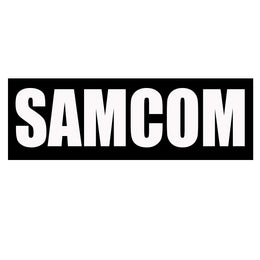How to program your SAMCOM radio ?
|
Note: Unlike other brands of radios, when the SAMCOM radio is programmed by you for the first time, the Read operation CANNOT be performed on it, but the Write operation can. Once you ever performed the write operation on it, then next you can perform the Read or Write operation on it. Please don't hesitate to reach out to SAMCOM Team : sanconmarketing2@outlook.com if you need any tech supports. |
|
Step 1 : Download the free Customer program software |
|
Step 2: The SAMCOM program software is zipped into a “.rar file”and it needs to be “unzipped’ before running the program. ( Not support IOS system, only Windows system ) Our recommended program for unzipping files is “7-Zip”. |
|
Step 3: Insert one end of the SAMCOM USB programming cable into your PC, and the other end into the speaker microphone jack of your SAMCOM radio. (Other brands of programmable cable might not work with SAMCOM radios and can not be programmed successfully. ) |
|
Step 4: To check which COM port number is allocated for your programming cable, open the Device Manager of Operating System on your PC, and expand the Port (COM & LPT) category, and then check which COM port number will appear after the cable is plugged into PC and will disappear after the cable is unplugged. |
|
Step 5: Run the SAMCOM program software. When the software completes startup, all the default setting parameters are displayed on the program interface. You can directly edit any default setting parameters as needed. |
|
Step 6: Referring to the results checked in Step 4, select the proper COM Port on the upper right side of the program interface. |
|
Step 7: To have two radios successfully communicating with each other, it is necessary to set all parameters of the channels intended for communication to be the same, such as RX Frequency, TX Frequency, RX CTS/DCS, TX CTS/DCS, Band, and so on, as shown in the middle of the program interface. (Frequency Range is UHF 406.1-470MHz) For Band setting, either 12.5K or 25.0K (i.e., Narrow band and Wide band) can be selected depending on your radio service. Most commercial radio frequencies and FRS Frequencies are narrowband (12.5K), while Amateur Radio (HAM Radio) frequencies may be wideband (25.0K).
|
|
Step 8: In addition to changing the channel parameters, you also can make any necessary changes on the left side of the program interface to configure Language, SQL (Squelch Level), Power Mode, etc. (FPCN10A can not change the Power Model ) |
|
Step 9: When you have completed all the necessary parameter modifications, you need to simply press the screen button labelled “Write” on the right side of the program interface to have the parameters written into the radio. When 100% appears on the bottom of the program interface, the radio is programmed successfully. |
|
Step 10: If the radio was ever written by your using the program before and now you want to check what parameters were written into it, you can simply press the screen button labelled “Read” on the right side of the program interface. When 100% appears on the bottom of the program interface, the parameters of the radio is read out successfully. |


































